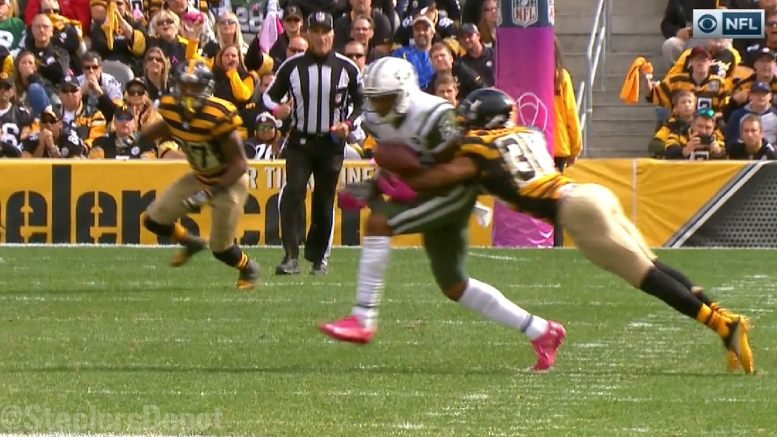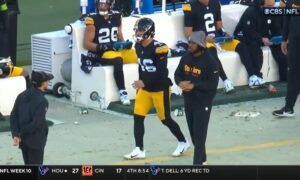If there is one thing that Pittsburgh Steelers fans can probably agree upon, it is the fact that they have a propensity to be a prickly group. It is somewhat understandable—excellence breeds expectations of further excellence, and failure to meet lofty expectations, even if not far off the mark, can produce strong reactions, even if some criticisms might contradict one another.
One of the most interesting dynamics over the past few seasons has been the perpetual frustrations over the tackle-the-catch approach that many believe is a hindrance to the team’s defensive success, versus the hand-wringing over getting beat ‘over the top’ on deep passes.
There was a period of a couple of years, during their 8-8 seasons, and even into last year, in which the Steelers struggled more than they usually do of keeping a lid on the opposing offense and limiting the number of big plays that they allow, but over the course of this season so far, that has largely been an issue of the past.
While the Steelers have given up two plays of 40 yards or more through the first five games, it should be noted that both of them came on underneath throws, on check downs or screens to the running back, and both of them took place in the same game, against the Eagles.
The longest play that the defense has allowed through the air through five games on a deep target was a 33-yard play, and that came all the way back in the first week of the season, in a game in which they won pretty handily, although it was at one point just an eight-point game in the fourth quarter.
In fact, of the 15 passing plays of 20 yards or more that they have allowed thus far this season—which ranks tied for 12th-fewest in the league at this point—only seven of them have come on plays that went down in the game book listed as ‘deep’ passes, meaning that they are only allowing 1.4 completions on deep targets per game.
This is the strength of the Steelers’ defensive philosophy, although, of course, it works out a lot better as a whole when you are also able to prevent short and intermediate passes to be converted into explosive plays, but that is often, and this season has been, primarily an issue of tackling efficiency, which has been on an upswing in recent weeks.
There is a strong correlation, and an increasingly large one, between touchdown drives and drives that consist of explosive plays on deep targets. If anybody can attest to that, it’s Pittsburgh. They have had 14 drives this season that include an explosive play on a deep target, and they have ended 10 of them with a touchdown.
That is why the Steelers spend so much time focusing on taking away the deep ball, even if they don’t necessarily end up in the end zone. Today’s offenses thrive on those plays, and eliminating them from an offense’s repertoire puts a limit on what they are able to run.








